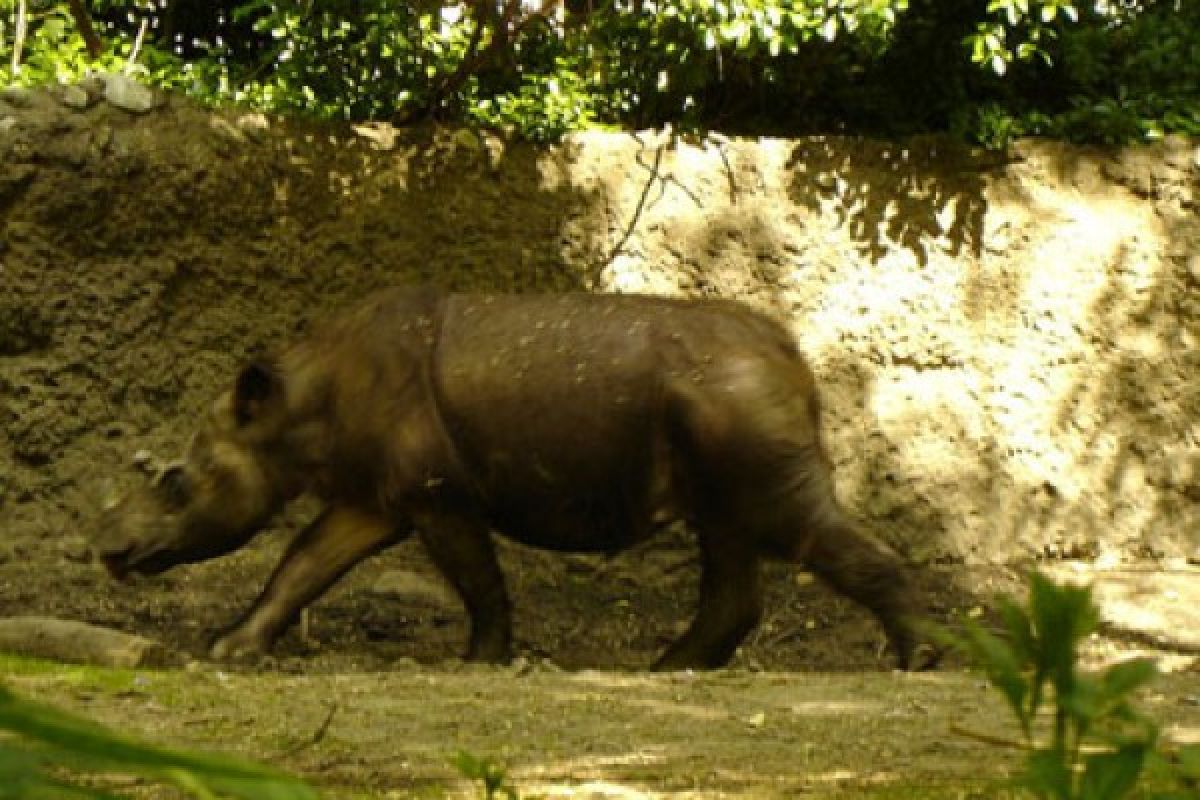There are five rhino species left in the world, and two of them are in Indonesia: the Sumatran rhino (Dicerorhinus sumatrensis) and the Javanese rhino (Rhinoceror sondaicus).Jakarta, June 20 (ANTARA) - President Susilo Bambang Yudhoyono, the leader of one of the world`s most diverse countries, is scheduled to attend the Rio+20 (United Nations Conference on Sustainable Development), in Rio de Janeiro, Brazil, which will be held from June 20-22.
The Rio+20 conference will mark the 20th anniversary of the 1992 United Nations Conference on Environment and Development (UNCED), which was held in Rio de Janeiro, and the 10th anniversary of the 2002 World Summit on Sustainable Development (WSSD) in Johannesburg, South Africa.
Prior to the summit, the United Nations TV (UNTV) and the Secretariat of the Convention on International Trade in Endangered Species of Wild Fauna and Flora (CITES) launched a film titled "Rhino under threat" at the Rio+20 on June 18, 2012, which provides information about rhino poaching, illegal trading and their impact on local communities.
"We need to work together at the national and international level to stop the poaching, smuggling and consuming. It will be tough, but if we manage to work together, we will win this fight", CITES Secretary General John E. Scanlon said in a press statement from the United Nations Environment Program (UNEP).
There are five rhino species left in the world, and two of them are in Indonesia: the Sumatran rhino (Dicerorhinus sumatrensis) and the Javanese rhino (Rhinoceror sondaicus).
The remaining three species are the Indian rhino (in Nepal, India and Bhutan), the white rhino (Botswana, Ivory Coast, Congo, Kenya, Namibia, South Africa, Swaziland, Zambia and Zimbabwe), and the black rhino (Cameron, Kenya, South Africa, Tanzania, Namibia, Ethiopia, Rwanda, Swaziland, Zimbabwe, Zambia and Botswana).
While commemorating the World Environment Day in Jakarta on June 5, 2012, Yudhoyono launched the International Rhino Year 2012 in a bid to mobilize global efforts to conserve and protect the wild animal from extinction.
The launching of the International Rhino Year 2012 is part of a mandate from the International Union for Conservation of Nature (IUCN), which is supported by 11 countries that have rhino population, including Mozambique, Namibia, South Africa, Bhutan, Nepal, India, Zimbabwe and Malaysia.
After a meeting with forestry minister Zulkifli Hasan, the chief of the IUCN`s Commission for Species Conservation, Simon Stuart, said Indonesia had been chosen to host the launching of the International Rhino Year because it was home to two of the rarest rhino species.
President Yudhoyono wanted to make rhino conservation a part of the government`s efforts to promote Indonesia as one of the global leaders in green economic development.
"The International Rhino Year is meant to provide momentum and access for increasing international cooperation in the conservation of rhinos in our country," the head of state said during the launch.
Yudhoyono said he wanted the International Year of the Rhino to boost cooperation in rhino conservation among Indonesian government agencies, Indonesian communities, and leaders of nongovernmental organizations, both domestically and internationally.
IUCN Director General Julia Marton-Lef'vre stated at Rio+20 that the success in rhino conservation was a function of political will and significant field efforts, which involved not only protecting the rhinos on the ground, but also gathering intelligence.
"It is clear that today we need to redouble our efforts. That`s why IUCN stands ready to support the range states, conservation groups, CITES and its partners to ensure future survival of the rhino in the wild," Marton-Lef'vre said.
The number of Javanese rhinos, based on camera records, in Ujung Kulon National Park in West Java is now 35. Indonesia is the only country that has the Javanese rhino, after the species was declared extinct in Vietnam in 2011.
Meanwhile, the number of Sumatran rhinos is recorded at around 200, distributed between the Way Kambas National Park in Lampung and Leuser National Park in Aceh province.
Indonesia is now awaiting the birth of a Sumatran rhino in July.
However, due to a sharp rise in illegal hunting and non-traditional use of rhino horn in the past decade, two rhino sub-species, the Indochinese Javan rhinoceros (Rhinoceros sondaicus annamiticus) in Vietnam and the Western Black rhinoceros (Diceros bicornis longipes) in Cameroon have become extinct, according to the IUCN.
In the past, the Javan rhino could be found in Bangladesh, Myanmar, Thailand, Laos, Cambodia, Vietnam, southern China, peninsular Malaysia, and the Indonesian island of Java. By the middle of the 19th century, the species was extirpated from most of its historical range, and can now only be seen in two small isolated areas, including Ujung Kulon National Park at the westernmost tip of Java island.
The Sumatran rhinoceros had once inhabited an area that stretched from the foothills of the Himalayas in Bhutan and north-eastern India, through southern China, Myanmar, Thailand, Cambodia, Laos, Vietnam and the Malay Peninsula, up to the islands of Sumatra and Borneo in Indonesia.
The Sumatran rhinoceros and the Northern White rhino (Ceratotherium simum cottoni) are both listed as Critically Endangered on the IUCN Red List currently.
According to available data, the population of Indian rhino has increased to 2,913 after having dropped to 600 in 1975, while there 20,140 white rhinos now, ten times more than the 2,000 recorded in 1960. The number of black rhinos has also increased from 2,475 in 1993 to 4,838 in 2012.
For rhino conservation, the Indonesian government has pledged to set up a high-level rhino task force of national and international experts in order to ensure the future survival of both the Javan and Sumatran rhinos.
Indonesia is rich in biodiversity and has large number of endemic species. More than 10 percent of the diversity of flora and fauna on Earth is found only in Indonesia, including orangutans, elephants, tigers, rhinos, and thousands of species of birds and plant species.
The Indonesian government also plans to allocate sufficient resources to enforce the protection of the remaining rhino populations and ensure that there is regular and intensive monitoring of all rhino populations in the country.
Forestry Minister Zulkifli Hasan recently said Indonesia cared for the conservation of rhino population. The ministry has allocated Rp6 trillion (over US$6 billion) for activities that include conservation of rare species.
The ministry has an Action Plan of Javanese Rhino Conservation until 2017, and hopes to increase the Javanese rhino population from 35 at present to 70 by 2015.
The private sector has been encouraged to participate in the rhino conservation program by establishing partnership with the Indonesian Rhino Foundation (YABI).
Based on available information, the demand for rhino horns comes principally from Asia, with the major market being Vietnam, according to UNEP.
According to a report commissioned by the CITES Secretariat, the rising levels of demand have been fuelled by rumours of rhino horn being a cure for cancer and male impotency.
Due to such rumors, the street price of rhino horns is higher than gold, although there is no scientific evidence suggesting that the horns could be used for making medicines. (*)
Reporter: Fardah
Editor: Heru Purwanto
Copyright © ANTARA 2012












